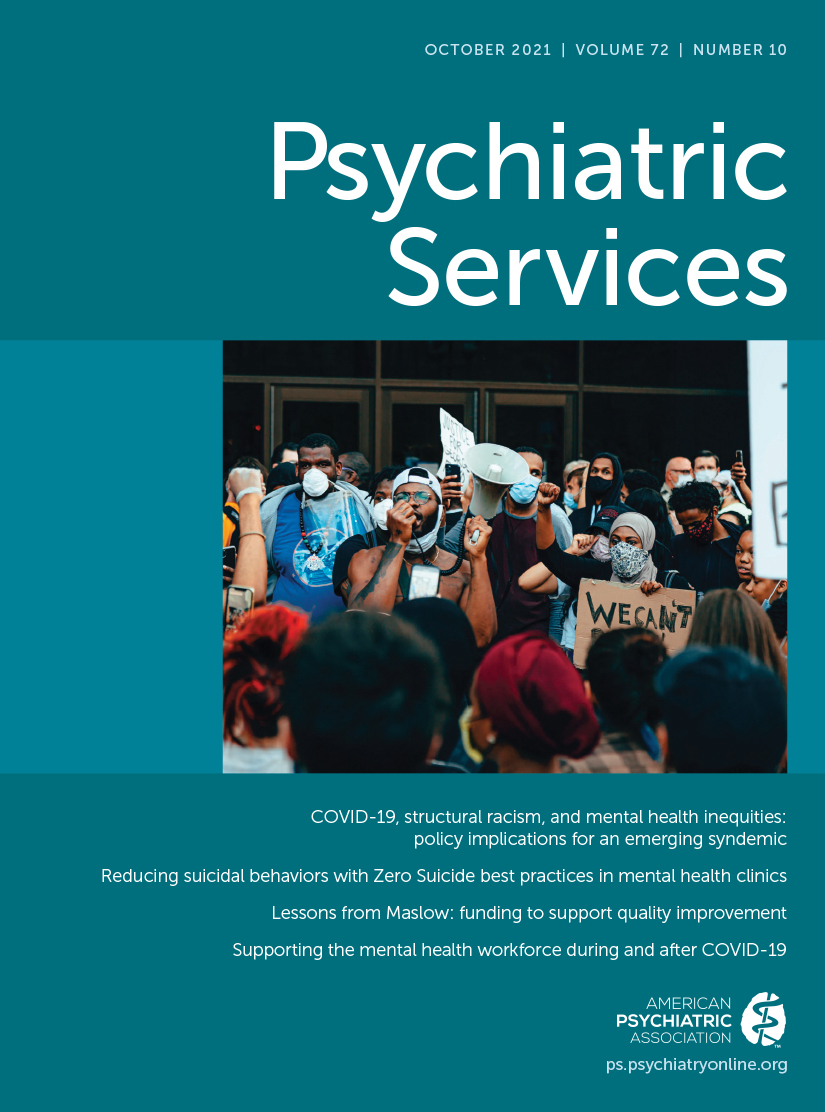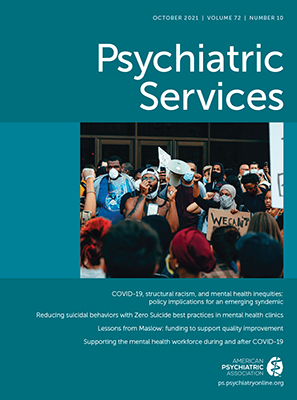The United States is expected to become a “majority minority” country by 2044 (
1), placing increasing emphasis on providing safe, high-quality medical care through deeper understanding of the cultural and personal values, beliefs, and preferences of diverse populations (
2). However, in the health care setting, it has been challenging to design educational programs focused on improving cultural understanding that are effective, efficient, equitable, patient-centered, and scalable. This column describes the journey of the psychiatry department at an academic medical center, Massachusetts General Hospital (MGH), to create an online training program in cultural sensitivity. First, we describe the theoretical and logistical background of the online program, then the content of the three modules, and then the feedback from the course participants. Finally, we offer reflections on how this experience can help mold future efforts to deepen the focus on cultural sensitivity to include the frameworks of cultural humility and antiracism.
Content and Format
Between September 2015 and December 2017, the department’s Center for Diversity worked with clinical leadership, the Division of Quality and Safety, and the Psychiatry Academy to develop the online training program, called Cultural Sensitivity 101. Three modules were created (
Box 1), each with a specific focus building on the previous module’s content; the first and third module were clinically focused. The first module, “Introduction to Cultural and Ethnic Assessment,” was developed specifically to provide clinicians with an introduction to the concepts of culture, race, and ethnicity. It also summarized the
DSM-5 Outline for Cultural Formulation (OCF) and Cultural Formulation Interview (CFI) for use in taking a cultural history with all patients. This 10-minute online module was available to all clinicians (trainees and faculty) in the department.
The second module, “Cultural Sensitivity 101,” was available to all department members (staff, trainees, and faculty) and highlighted the importance of cultural sensitivity and humility to a wide audience. This 30-minute module had three parts and covered cultural identity as a multidimensional construct (
3), the role of implicit biases in interactions, and the concept of microaggressions. An online written case vignette of a patient with a multifaceted cultural identity (an elderly Black woman identifying as Christian) was offered to clinicians for use in reviewing the
DSM-5 OCF and CFI.
The third module, “Cultural Assessment and Clinical Considerations,” provided a 10-minute presentation of two additional clinical case vignettes. This module was developed in response to participant feedback from the first module. Clinicians indicated that they often felt stumped about what questions to ask to elicit a cultural history, and they requested practice in documenting a cultural history. The two case vignettes (one of a young woman identifying as Muslim and one of an elderly White man who reveals more about his cultural identity with more direct questioning) were chosen to highlight the concept that every individual carries distinct cultural identities, whether one identifies as White or from a racial-ethnic minority background. Additionally, a broad range of examples of specific questions were given to facilitate clinician inquiry into a variety of cultural backgrounds.
Each module was crafted to engage participants by using brief interviews and filmed simulations. Although all of the modules included PowerPoint presentations, in an effort to engage participants and increase their personal connection to the content, the second module also included a video montage featuring various staff members, trainees, and faculty members reflecting on their own cultural identities. The section regarding microaggressions included filmed simulations, starring trainees and faculty, of microaggressions and of how bystanders might find themselves responding either inappropriately or appropriately.
Participants evaluated the program by completing multiple-choice and open-ended surveys on their own electronic devices. The evaluations were optional and included a 12-item cultural competence self-assessment regarding participant comfort in defining key concepts of culture, ethnicity, and race; identifying stereotypes; interacting with patients from different backgrounds; eliciting patients’ illness perspectives; and using interpreters (
4). In addition, a general evaluation of the Cultural Sensitivity 101 program was offered, and a multiple-choice questionnaire was provided to assess clinician knowledge and comfort with using the
DSM-5 OCF and CFI. In the final module, clinical faculty were asked to practice writing a cultural history and assessment using an example from their own practice. A week before the rollout of each module, all eligible participants received an e-mail invitation that also contained information regarding the Joint Commission requirement (
2) to include a cultural and ethnic assessment in every patient evaluation. All procedures were approved by the Partners Healthcare Institutional Review Board.
Results
All three modules were made available to all clinical faculty via e-mail, and continuing education credits were provided as an incentive to complete the program; the second module was available to staff and clinical faculty. A total of 271 participants (clinical faculty) completed the first module, 333 participants (clinical faculty and staff) logged into the second module, and 106 (clinical faculty) logged into the third module.
At the end of the second module, 304 of the 333 participants completed the voluntary program evaluation. Of those 304 (7% staff, 93% faculty), 77% (N=233) identified as White, 12% (N=36) as Asian, 4% (N=13) as Black, and 6% (N=19) as Latinx. Participants rated the technology as user friendly (mean±SD=4.16±1.20 on a 5-point Likert scale [1, strongly disagree, to 5, strongly agree]). Respondents also endorsed the module as useful and the learning objectives as met (N=304, mean=4.29±1.10 on a 5-point Likert scale). In free-response feedback, participants indicated that they appreciated the focus on defining the terms “implicit bias,” “microaggressions,” and “microinvalidations.” Participants felt most confident in their ability to interact with people from diverse populations, but they felt least comfortable with how to intervene when witnessing a microaggression. That a majority (N=271, 89%) of participants reported they would change their practice suggests that short, online modules may have the potential to provide long-lasting changes in practice, thus improving patient care.
The results of the evaluations suggest considerable room for further training after the second module: 246 clinical faculty who completed the case vignette indicated that they had only moderate comfort with eliciting a patient’s perspective of illness (mean=67.70±15.49 on a 100-point scale [0, not at all comfortable, to 100, completely comfortable]) or a patient’s perspective on healing, medication, and therapy during a patient encounter or consultation (mean-67.35±15.38 on the 0–100 scale). In addition, a majority of respondents (N=246, 77%) could not identify the relevant portions of the
DSM-5 that offer ways to explore a patient’s cultural history, which was a higher percentage than that of a 2014 Medscape survey (
5) reporting that one-third of psychiatrists were not using the
DSM-5 in their practice. This finding suggests that simply creating a reference is not adequate to ensure clinicians have the skills necessary for taking a cultural history or assessment.
Future Directions
This column describes a novel online training program in cultural sensitivity for faculty, trainees, and staff. Results from the voluntary program evaluation after the second module suggested that the training was overall well received, with a majority of participants endorsing that the modules were useful, that the learning objectives were met, and that they would change their practice as a result of the training.
The online platform allowed staff and clinicians to complete the training modules and evaluations in a private setting and limited the need for the logistics of coordinating multiple in-person sessions. The online format, however, potentially limited participants’ ability to engage dynamically with the material presented. Because the training modules were recorded and delivered online, the training could not be tailored to each participant’s individual needs. Although participants were able to practice skills through the online written case reflection, they were not able to practice skills through active discussion. Additional barriers to participation may exist on the basis of participant comfort with computer-based training. Despite these limitations, participants generally rated the technology as user friendly.
This online program had additional limitations. The evaluation was voluntary and cross-sectional, participants were offered optional self-assessments, and written cultural assessments were not graded. Future programs will be needed to assess staff and clinician performance longitudinally and to include patient feedback and clinical outcomes (
6).
Few articles exist about actual diversity training programs, and fewer still about online training programs in the mental health care workplace (
7). In this era of remote learning brought about by the COVID-19 pandemic, translating educational offerings to a virtual format has become more needed, and with the racial justice uprisings of 2020 (
8), a focus on diversity, equity, and inclusion has become even more imperative (
9). Although most training on these topics is focused on awareness building and attitude change, behavioral change may require training to be linked to an organization’s strategic goals for improving quality of care (
10). In addition to a focus on improving provider-patient interactions, a focus on systemic initiatives may be necessary (e.g., providing appropriate interpreters, focusing on the recruitment and retention of providers from racial-ethnic minority populations, and involving community stakeholders) (
7).
Education on issues of diversity, equity, and inclusion also may promote more openness to systemic change within an institution (
6). In 2015, our choice of the term “cultural sensitivity” felt novel, with its focus on attitudinal change, in contrast to the more standard term “cultural competence,” with its focus on acquisition of knowledge. Since then, our Psychiatry Center for Diversity has evolved to focus on the frameworks of cultural humility and antiracism. In parallel to these conceptual shifts, and since the online program described here was developed, our department has recruited a director of underrepresented minority affairs to support trainee and clinician recruitment, retention, and mentorship. The department is now developing a strategic plan to focus on antiracism, mirroring larger trends in academic psychiatry, in the hospital and medical school as well as nationally (
9). Thus, although it is only one small piece of the puzzle, an online training program focusing on shaping knowledge, attitudes, skills, and behaviors for mental health professionals can be an integral part of moving the needle forward for lasting systemic change focusing on diversity, equity, and inclusion.

